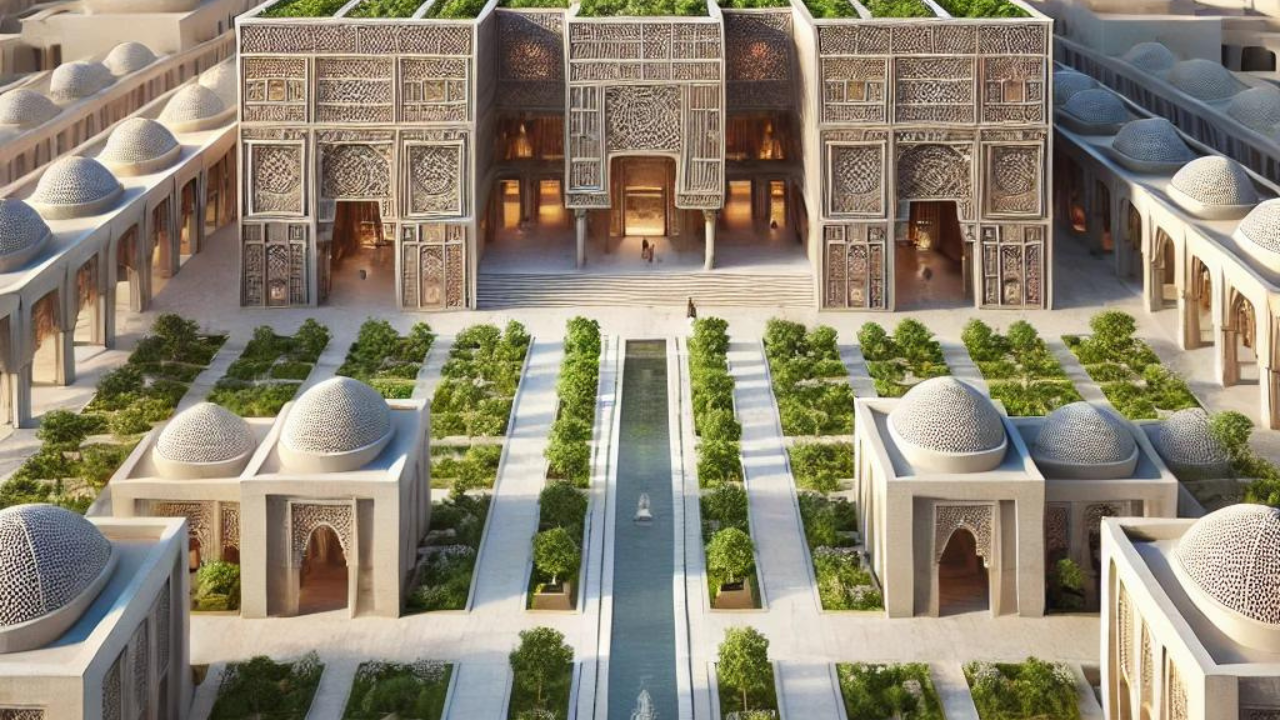The Sankaka Complex is an architectural masterpiece that blends history, culture, and modern innovation. This iconic structure is renowned for its aesthetic appeal, historical significance, and cutting-edge design principles. This article will delve into the Sankaka Complex’s architectural brilliance, focusing on its design, historical importance, and innovative techniques that make it a marvel of contemporary architecture.
Historical Background of Sankaka Complex
The Sankaka Complex, located in [City/Country], was constructed in [Year] and has since become a symbol of [Cultural/Regional] heritage. Its history is deeply intertwined with the socio-political events of the time, with the complex serving as a [purpose, such as administrative, cultural, or residential]. The architectural style reflects the period’s prevalent trends, yet it has evolved to incorporate modern design elements over the years.
The complex was commissioned by [Name/Organization] to commemorate [event/person], and its construction marked a significant milestone in the Region’s urban development. Architects and designers from [Region] collaborated to create a structure that served a functional purpose and stood as a monument to the artistic and cultural movements of the time.
The Sankaka Complex’s historical significance is further enhanced by its location, which was strategically chosen to reflect its importance in the Region’s political and cultural landscape. Over the years, the complex has witnessed various historical events, making it a living testament to the passage of time and history.
Architectural Design Elements of Sankaka Complex
The design of the Sankaka Complex is a harmonious blend of traditional architectural motifs and contemporary design practices. Its façade is characterized by [specific features like symmetry, intricate carvings, or modernist lines], which reflect past and present architectural trends.
Key Architectural Features:
- Exterior Design: The exterior of the Sankaka Complex is known for its [specific materials used, such as stone, glass, or metal]. The choice of materials was aesthetic and functional, ensuring durability and sustainability. The façade’s [color, texture, or pattern] reflects the [cultural significance or design philosophy].
- Interior Layout: The complex’s interior is designed with both form and function in mind. Large, open spaces dominate the design, offering [description of lighting, airflow, or room orientation]. The use of [materials like wood, marble, etc.] inside adds to the luxurious yet practical feel of the structure.
- Symmetry and Geometry: One of the standout features of the Sankaka Complex is its use of symmetry and geometric patterns. These design elements are rooted in [cultural/religious] traditions but have been modernized to appeal to contemporary aesthetics.
- Sustainability: In recent years, the Sankaka Complex has been renovated to make it more eco-friendly. Incorporating [solar panels, rainwater harvesting, and energy-efficient lighting] has aligned the structure with modern sustainability practices without compromising its historical integrity.
Innovation in Construction Techniques
One of the most fascinating aspects of the Sankaka Complex is the innovative construction techniques used during its development. These techniques contributed to the building’s structural integrity and paved the way for future architectural advancements in the Region.
Use of Local Materials
A significant portion of the complex was constructed using locally sourced materials, which helped reduce its environmental footprint. Using [specific materials] reflects the Region’s natural resources and has contributed to the complex’s longevity.
Structural Engineering Advancements
The Sankaka Complex was one of the first in the Region to incorporate [specific construction techniques, such as steel framing, reinforced concrete, or earthquake-resistant technology]. These advancements made the building more durable and set a new standard for construction in the Region.
Integration of Modern Technologies
In its recent renovations, the Sankaka Complex has embraced modern technology, incorporating smart systems for [lighting, security, or climate control]. These systems make the building more energy-efficient and user-friendly while maintaining its architectural integrity.
Cultural and Social Impact
The Sankaka Complex is more than just a building; it is a cultural landmark. It has played a significant role in the Region’s social fabric, serving as a venue for [events, gatherings, or exhibitions]. Its design is a testament to the Region’s artistic heritage, with elements of [specific artistic movements] incorporated into its architecture.
Over the years, the complex has been a hub for [cultural or political] events, drawing visitors worldwide. It stands as a symbol of [cultural identity, unity, or resilience], and its influence extends beyond the architectural community into the broader socio-political sphere.
Preservation and Future Prospects
As with many historical buildings, the preservation of the Sankaka Complex has been a topic of concern for conservationists and architects alike. Efforts have been made to maintain the building’s original structure while incorporating modern innovations to ensure its longevity.
Restoration Efforts
In recent years, several restoration projects have been undertaken to repair and preserve the complex’s aging infrastructure. These efforts have focused on [specific areas, such as the façade, interior spaces, or structural supports], ensuring that the complex remains safe and accessible for future generations.
Future Plans
Looking ahead, plans are underway to further integrate technology into the Sankaka Complex, making it a model for smart buildings in the Region. Additionally, there is a growing movement to promote the complex as a tourist destination, highlighting its architectural brilliance and historical significance.
5 FAQs About the Sankaka Complex
1. What is the historical significance of the Sankaka Complex?
The Sankaka Complex was built in [Year] to commemorate [event/person]. It has since become a symbol of the Region’s cultural and political history, witnessing numerous important events.
2. What are the key architectural features of the Sankaka Complex?
The complex combines traditional and modern design elements, including a symmetrical façade, use of local materials, and geometric patterns. Recent renovations have incorporated eco-friendly technologies, enhancing its sustainability.
3. How has the Sankaka Complex influenced modern architecture?
The Sankaka Complex has set a new standard in the Region for innovative construction techniques, such as [specific techniques], and the integration of smart technologies. Its design has inspired modern architects to blend tradition with innovation.
4. What materials were used in the construction of the Sankaka Complex?
Locally sourced materials, such as [specific materials], were primarily used to construct the complex. These materials contributed to the structure’s durability and reduced its environmental impact.
5. Are there any plans for the Sankaka Complex?
Yes, plans are underway to integrate more advanced technologies into the building, making it a model for smart architecture. Additionally, efforts are being made to promote the complex as a cultural and architectural tourist destination.
You May Also Read: https://usadigitaltime.com/slayunny2/




